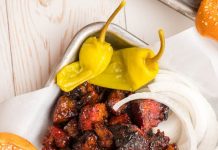In today’s fast-paced world, the art of baking homemade bread is a timeless joy that offers both comfort and cost-effectiveness. Whether you’re a novice or a seasoned baker, creating fresh bread from scratch not only saves money but also brings a sense of handmade warmth to your meals. Join us as we explore a simple yet rewarding recipe for Navajo Flatbread—a versatile delight reminiscent of naan bread—perfect for any kitchen adventure.
How To Make Homemade Bread For Pennies
Making fresh bread at home is not just a culinary endeavor; it’s a return to simplicity and satisfaction. The Navajo Flatbread recipe, graciously shared by Facebook user Brandon Johnson, requires only a handful of pantry staples, making it accessible and economical.
Ingredients:
- 2.5 cups of all-purpose flour
- 1.5 cups of lukewarm water
- 1/3 cup of baking soda
- 1 teaspoon of Kosher salt
- 1/4 cup of fat (butter, oil, or shortening)
Instructions:
- Mixing the Dough: Begin by combining the flour, baking soda, and salt in a mixing bowl. Gradually add most of the water, stirring until the mixture resembles sticky pizza dough. Incorporate the remaining water as needed to achieve the desired consistency.
- Kneading the Dough: Transfer the dough onto a floured surface and knead until smooth and elastic, about 8-10 minutes. This step is crucial for developing the bread’s structure and texture.
- Resting the Dough: Place the kneaded dough in a lightly oiled bowl, cover with a damp cloth, and let it rest for 30 to 60 minutes. This resting period allows the dough to rise and develop flavor.
- Portioning and Rolling: Divide the rested dough into six equal portions. On a floured surface, roll each portion into a thin round, similar to the thickness of a tortilla. This flatbread’s versatility makes it suitable for various serving styles—from wraps to sides for stews.
- Cooking the Flatbread: Heat a skillet or griddle over medium-high heat to approximately 350 degrees Fahrenheit. Cook each flatbread for about 2-3 minutes per side, or until golden brown spots appear. This quick cooking method ensures a tender interior with a lightly crisp exterior.
Conclusion:
Homemade bread, like this delightful Navajo Flatbread, offers more than just a satisfying meal—it’s a testament to the artistry of home cooking. Beyond filling the kitchen with irresistible aromas, baking bread from scratch fosters a deep connection to tradition and craftsmanship. Each batch, crafted with simple ingredients and care, embodies a sense of pride and accomplishment that transcends mere sustenance.
Navajo Flatbread, with its rustic charm and versatility, serves as a canvas for culinary creativity. Whether adorned with savory toppings, used as a hearty wrap, or enjoyed plain with a smear of butter, every bite tells a story of resourcefulness and flavor. Its economical nature makes it a practical choice for families looking to stretch their grocery budget without compromising on quality or taste.
From the moment the dough hits the heated griddle, the transformation begins—a tangible reminder of the magic that happens in the heart of every home kitchen. As each flatbread cooks to golden perfection, it whispers promises of warmth and comfort, ready to be shared with loved ones or savored in quiet solitude.
Embracing the tradition of baking bread at home is more than a culinary choice; it’s a return to the fundamentals of nourishment and community. It invites us to slow down, appreciate the process, and rediscover the simple pleasures of wholesome, homemade meals. Whether relishing it fresh off the griddle or saving it for later, this Navajo Flatbread recipe invites us to savor not just the taste, but the enduring tradition of creating food that nourishes both body and spirit.
Source of the picture : Barbara O’Neill Lectures










